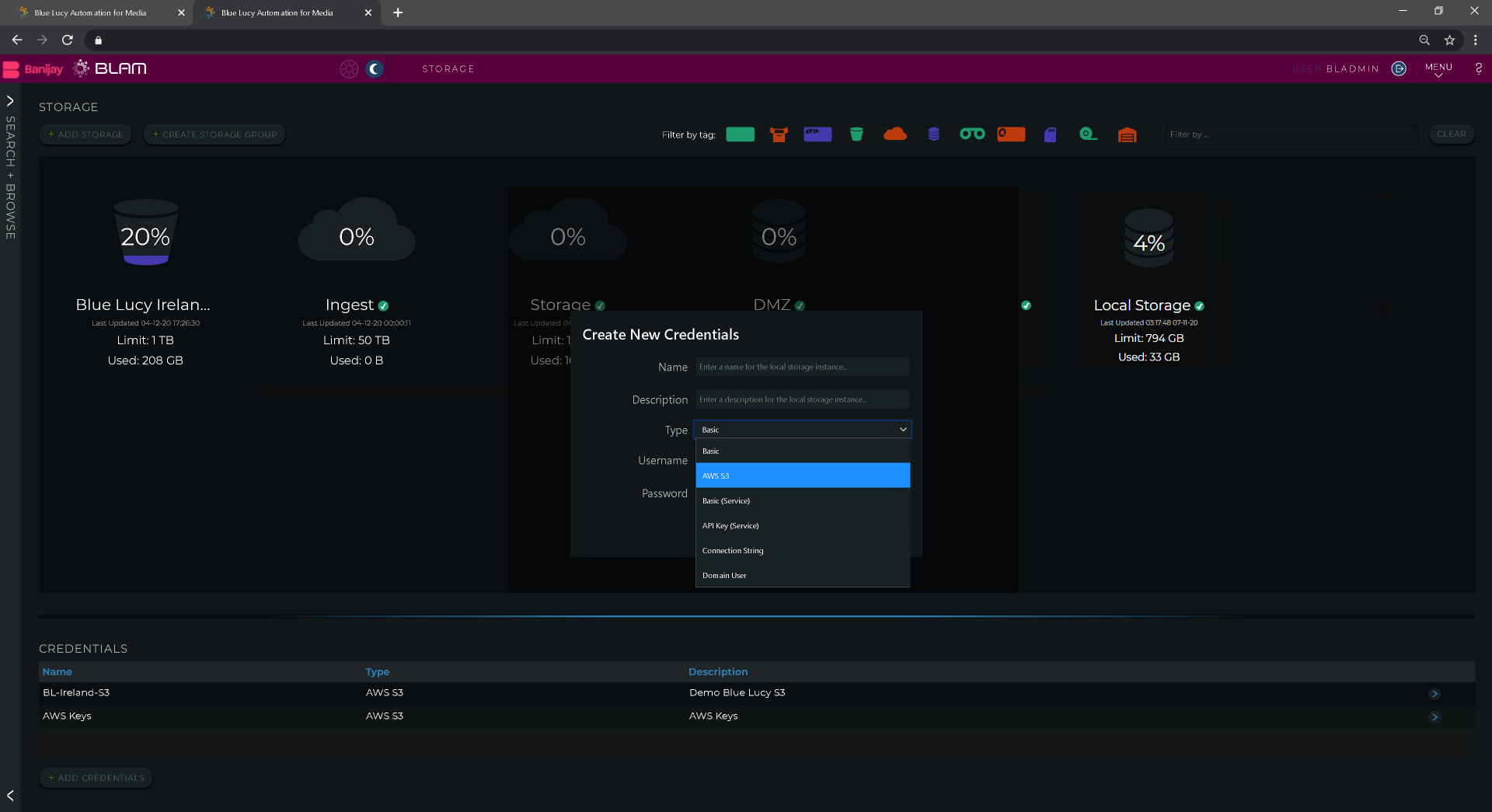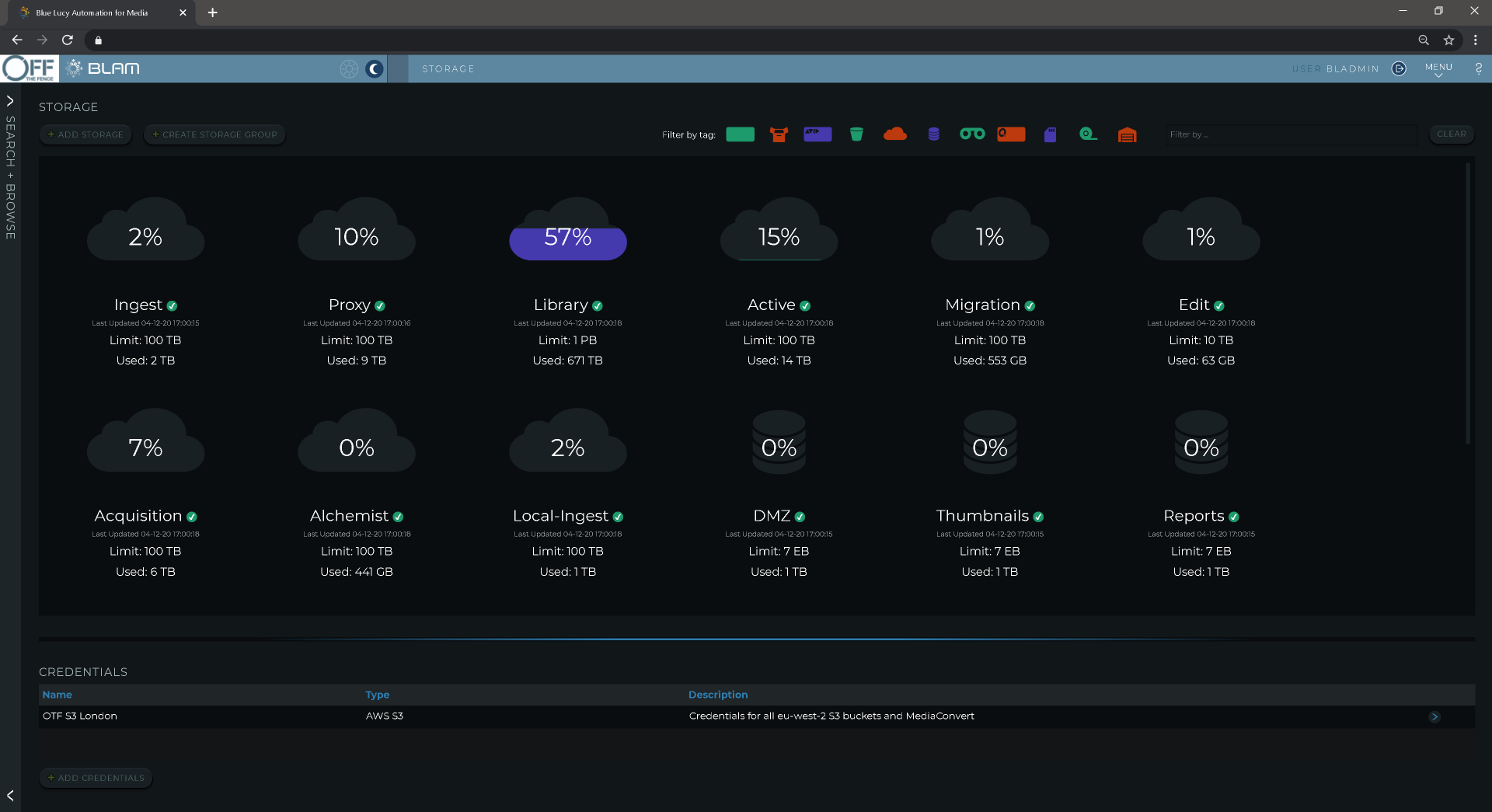BLAM Briefing, Blog
Bring Your Own Bucket
The use of cloud-based storage in the media industry has seen dramatic growth in recent years; more recently the impact of the Covid-19 pandemic is driving the take-up of cloud operations considerably. However, there is still some reluctance to place high-value material on 3rd party storage – mostly due to concerns over security.
Some dismiss these concerns as reminiscent of the migration away from video tape in the early 2000’s when producers kept Digibeta cassettes in their filing cabinets thinking media stored on the (RAID configured) SAN might vanish. This analogy isn’t entirely fair. Whilst cloud-based material is stored on infrastructure owned by another party, concerns about security – in terms of loss or unauthorised access (theft) – are negligible. AWS S3 and similar cloud-based storage is secure as long as it’s properly configured, access management is carefully controlled and a formal infosec policy is developed and adhered to.
Hold your own Keys
Our advice concerning cloud storage (based on a decade of experience as media technology consultants) is that media operators should make direct engagements with the big cloud providers and, if budget allows, with more than one. The commercial risk of a smaller operator going bust with the keys to a media business’s content is real and has been demonstrated.
At Blue Lucy we operate a “bring your own bucket” model. Our BLAM platform manages content, orchestrates and automates operational processes using a variety of services. BLAM manages access to these 3rd party services and tracks the utilisation costs, but the commercial relationship is directly between the content owner and the service provider. As Blue Lucy do not need to ‘own’ the content repository or the relationship with the service vendors, we don’t.
This model provides operators with maximum control in terms of security and cost. Content owners may negotiate favourable rates with storage and other service providers without Blue Lucy as an unnecessary, margin stacking intermediary: our business is in providing an enterprise-scale media operations management platform not reselling commodity services such as storage.
There are also operational benefits to controlling your own Bucket. One of the simplest and, more importantly, most cost-effective ways to ‘deliver’ content to direct-to-consumer providers is to provide managed access at the bucket level. This model may not be possible if the Bucket belongs to the intermediary service provider or if your content is in a bucket along with other another company’s material – this does happen.
Multi-Tenant BLAM & Security

3rd party platform credentials – such as storage details – are set and securely stored by Super Administrators
Because BLAM is a multi-tenant platform, a single BLAM can be used to manage media operations across multiple clients. A sophisticated user access control model is used to control access to the content with an additional security layer provided by the storage service provider. Obviously BLAM needs access to the storage, but any confidential information relating to these content repositories may be set once by a ‘super administrator’ and otherwise hidden from other administrative users.
Bucket Half Full?
For operators who already have content in cloud storage such as AWS S3, BLAM can quickly bring this under management. BLAM can index an S3 Bucket, making the material discoverable within the BLAM search function. Following the initial indexing process, thumbnail images are made available for content visualisation and full-format browse versions are automatically created. An existing S3 store can be searchable within minutes. Both thumbnail and browse creation take place without moving the master content, so there are no egress costs. Bringing an otherwise unmanaged content store under management is one of the most common models for new BLAM systems.

Storage Buckets may be ‘mounted’ by authorised users but the credentials remain hidden. BLAM can manage an unlimited number of Buckets or other storage types
The Last Word
Obviously, if a media operator ‘owns’ the storage buckets, it would also be relatively straightforward to migrate to other cloud-based media management providers as costs or functionality dictate. BLAM clients can also export all stored metadata in a structured machine-readable format making migration to another platform even simpler. Why would we do that? Because we are confident that once you start using BLAM changing provider won’t even be a consideration.
Contact us to find out how BLAM can help align your buckets, without needing to tip them out.
By Julian Wright
Share this story
Share on X Share on Linkedin Share via email